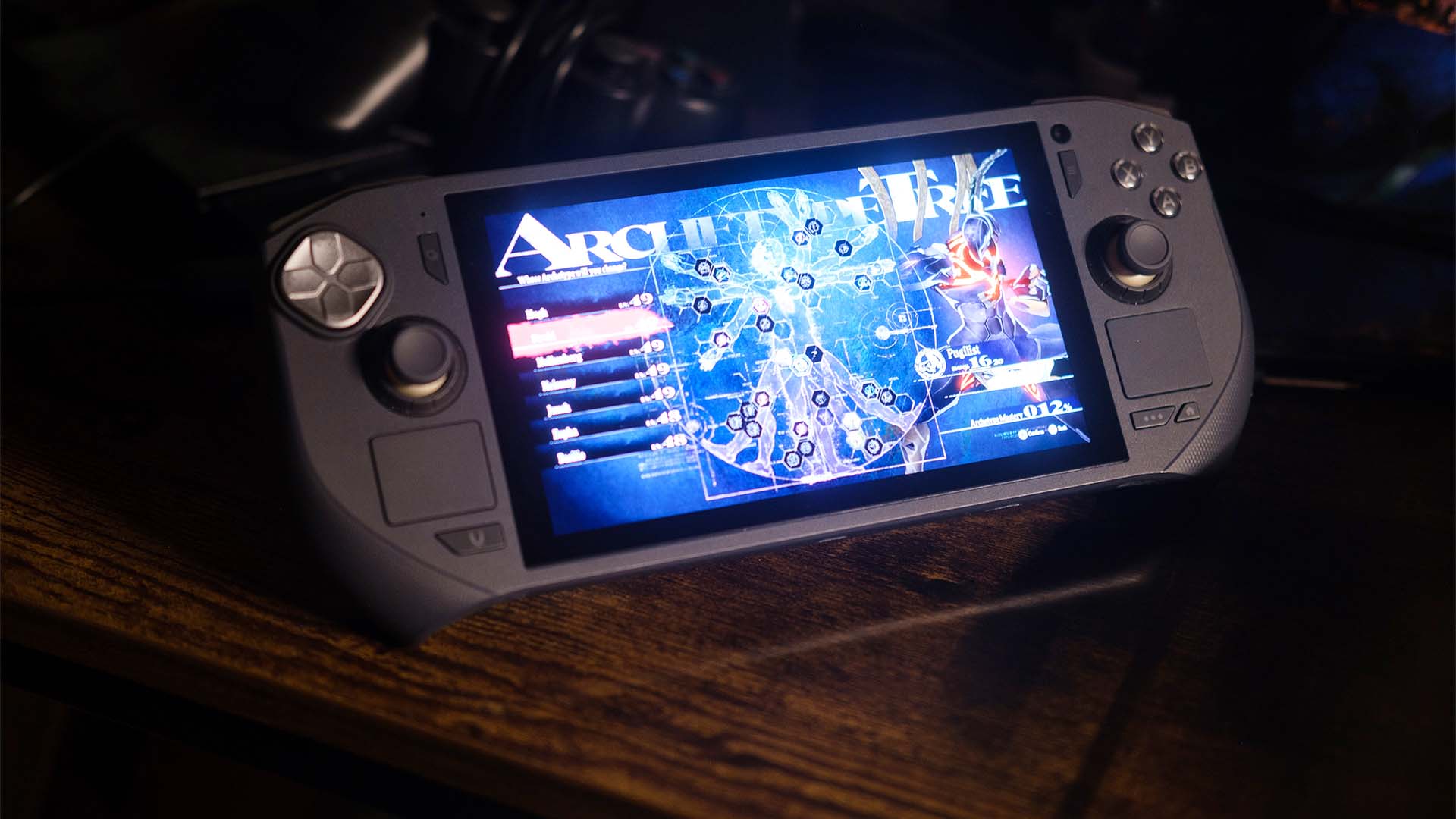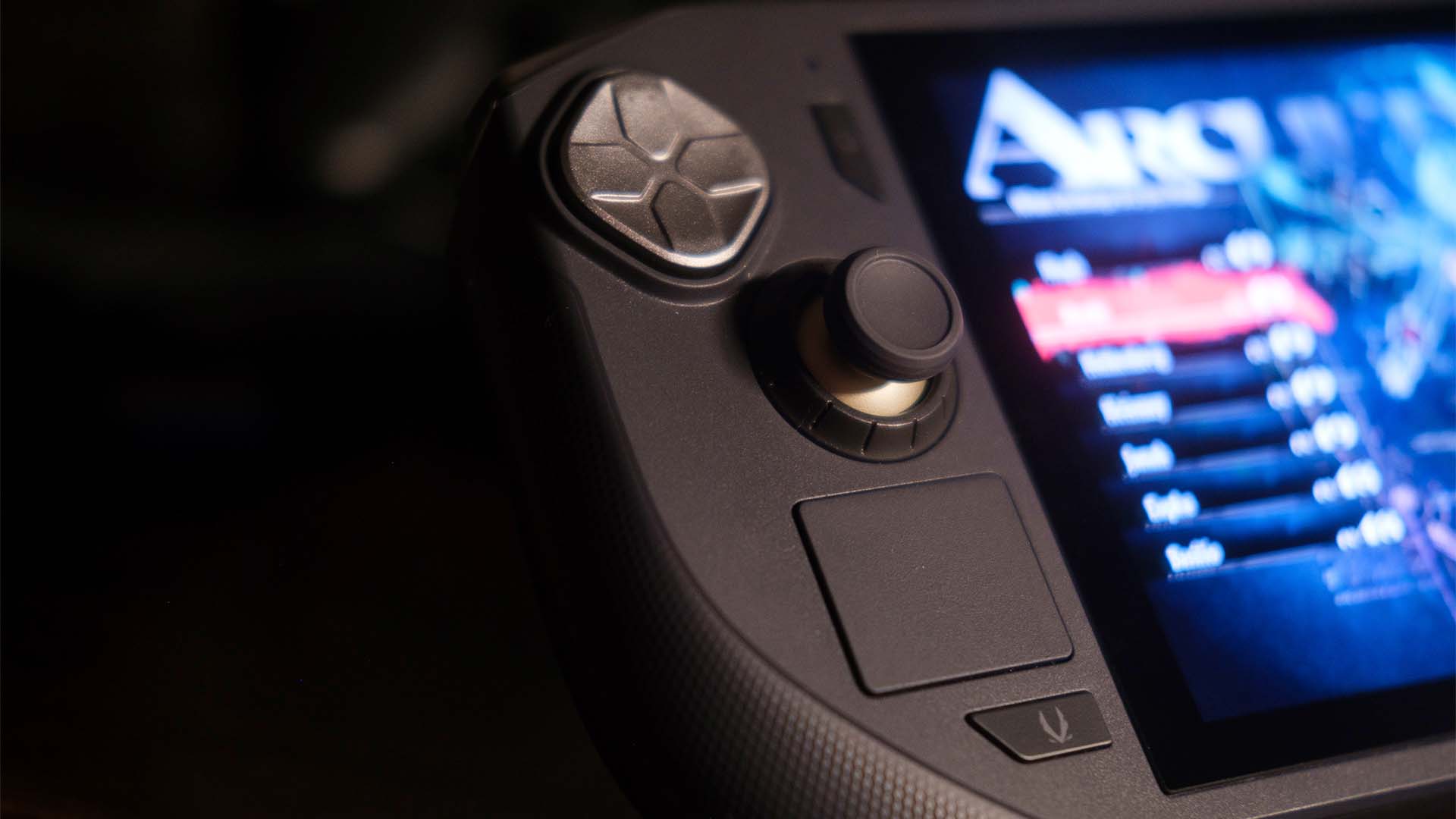
Zotac surprises with considerate hardware once again held back by rotten software.
The Zotac Zone, is the latest stab by a manufacturer at Valve’s throne and the Steam Deck. While it comes incredibly close to being a genuine best attempt—the design and layout is 100% aimed at mimicking Valve’s console—it is held back by software, and not just by the pesky hand of Microsoft and Windows 11.
It’s not the most flashy of entries in the ever growing list of Windows handhelds. It’s a more subtle affair, despite its typical “gamer aesthetic” outer shell. It’s all in the hardware, without the gimmicks.
However, it is the PC handheld that has felt the most detached from Windows during set up. After digging through Microsoft’s endless requirements and agreements vertically (there’s a gyroscope), I wasn’t met with any baked-in software. I did find Zotac’s software pre-installed, but it was a much older version than the latest release, and it consistently crashed.
Once I got it working Zotac—like everyone else—presents a far worse version of Steam Big Picture Mode (Valve’s additional front end originally intended for TVs) to get around Microsoft’s inability to launch its own, handheld console-like experience.
Processor: AMD Ryzen 7 8840U
GPU: Integrated AMD Radeon 780M
RAM: 16 GB
Storage: 512 GB
Screen: 7-inch 120 Hz AMOLED touchscreen
Controls: Hall effect analogue sticks, gyroscope, back paddles, dual touch pads
Connectivity: 2x USB4, 3.5 mm jack, Micro SD slot, Wi-Fi 6E, Bluetooth 5.2
Battery: 48.5 WHr
Dimensions: 285 x 115 x 35 mm
Weight: 692 grams
Price: $799 | £820
Zotac’s launcher is just riddled with glaringly obvious oversights. On the ROG Ally systems, Asus has presets for the performance options you’d like. Zotac’s “One Launcher” instead has you build your own presets, which without prior knowledge would make little sense. Does the regular consumer know that 17 watts is the agreed upon “best middle ground” for the 8840U or what a TDP even is?
Even the launcher’s controller remapper left me wanting more. A lack of options, including remapping a keyboard button to one of the back paddles or even having the remap function when active just led to frustration.
More frustrating is the branded buttons can’t be remapped either, an issue I found on the ROG Ally. It’s wasteful, when it could very easily be a generic guide button rather than causing the Zotac proprietary launcher to lurch to the front on instinctive presses.
I’m quite down on Windows handheld software, simply because we’ve been at this for some time now. GDP and OneXPlayer didn’t figure it out in the years before the Steam Deck. Not one manufacturer has cracked it since Valve’s release, with only Ayaneo really getting close.
While I could whittle on about Windows 11 on handhelds, it’s old hat. Just know that it’s the same here. You’ll be thumbing at the desktop environment—even with the trackpads—and fumbling through Game Pass to try get the wretched app to install anything.
It does make me look like a fan boy, but the honest truth is that Valve’s custom built version of Linux and major rework of Steam Big Picture to be a true frontend work so well, and work so well precisely because they’re custom-built to work with the hardware. It’s the complete package, something that Zotac is ever so close to figuring out.
While Zotac’s software is lacking, its hardware decisions aren’t. It feels as though at every turn, it took into consideration what people would want from a higher end handheld.
Underneath the hood is AMD’s 8840U, a killer chip that is the current favorite of companies like Ayaneo. It provides just that extra smidge of power over the previous 7840U, but the 16 GB of RAM means it still lags behind in some applications that of a fully upgrade Ayaneo 2S with 32 GB or Asus ROG Ally X with its 24 GB.
However, with the 8840U I found that Metaphor: ReFantizo ran exceptionally well at 1080p, 60 fps. I’ve been playing it quite a bit on the Steam Deck and the jolt between seeing everything at 30 fps, 720p and what the Zotac Zone can do, is a little like whiplash.
Other titles such as Ace Combat 7, Amid Evil, and Half-Life 2 all played magnificently at the higher end of the frame rate. Half-Life 2 and Amid Evil obviously held down the 120 fps mark, while Ace Combat 7 held steady at 60 fps. Even in the newest Forza Motorsport game I was hitting mid-40s with FSR supersampling helping along the way.
These handhelds do need supersampling for some newer titles. You’ll never be playing that new Indiana Jones game comfortably on one of these, but some of the Unreal Engine 5 games I played also needed that extra push.
Robocop: Rogue City ran extremely poorly without supersampling and frame generation. Both software tools, they use algorithms to achieve better performance. Supersampling shrinks the image and blow it back up at the desired resolution, taking work off the GPU. Frame generation literally tries to create the next frame based on the data provided.
I found that Rogue City introduced quite a bit of latency when using frame generation, but also, even with FSR, still needed to be bumped down a graphical notch in the settings to achieve a steady frame rate. Essentially, as with any of these handhelds, so long as you keep your gaming expectations in check, the Zotac Zone could be your next best friend.
One area that I wish Zotac had considered more was the storage space. 512 GB is paltry in the modern era. After installing Cyberpunk 2077 for benchmarks, as well as a few other titles, I was fast running out and it hadn’t even been a day. It really needs to be a 1 TB or more for a modern handheld. However, upgrading should be cheaper and easier than on something like the Steam Deck. Inside is a full sized, 2280 NVMe drive, instead of the usual 2230 short stack. This is a fantastic move for tinkerers, just making the system even more flexible.
Where Zotac obviously thought things through is the AMOLED screen. Measuring 7-inches, it is glorious. Rich, vibrant colors pour out of it. Horror titles like Crow’s Country ooze atmosphere as the deep blacks envelope everything. I found no major haloing or weird effects coming from it either, with not much in the way of color inaccuracies either.
✅ You want solid hardware, and the software be damned: While the software is awkward it does offer the best actual hardware of the bunch.
✅ You’re after a best in class screen: The AMOLED screen truly is in a class by itself on the Windows handheld front, only bested by those with OLED.
❌ You want an affordable option: The Zotac Zone sits with the likes of Ayaneo and Lenovo with a meaty price tag.
❌ You’re expecting to play the newest games: These handhelds play great with older titles or indie games, so no, you won’t be playing Stalker 2 at full whack on the go.
The Zone is incredibly comfortable to hold, even with its jagged edges on the palm rest. Aping Valve’s design, it sports two small trackpads with a definitive, satisfying click. There’s two USB 4 ports, making peripheral or docks use super easy to use.
It even has a Switch or Legion Go like stand to prop it up. There’s also a webcam on the front for Windows Hello and I’ve even used it as a last minute Teams meeting device—helped by its stand.
One major addition is the Hall effect sticks, meaning that even after prolonged use, you shouldn’t find them drifting. Even the rings around the sticks twist to adjust the brightness, volume, or RGB lighting. While I wish I could properly remap these, it shows Zotac’s genuine care in the hardware space.
Zotac has taken notice of the push in the controller space for, well, more control. The software might not be helpful, but the physical switches beside the triggers means you can set if you want it to be a quick snap press or a longer, more analogue one depending on the game you’re playing.
Its things like these which set the Zotac Zone apart from the other Windows handhelds. The Zone feels like a contemplated idea, rather than a rushed to market thing. Combined with its performance prowess, if you can put up with some quirks—as with any of these machines—you should put this on your list of considerations.











